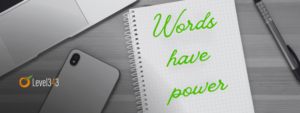The past few posts, we’ve been talking about lead generation tips, strategies and forms. If you missed it, you can start the series with Lead Generation: Learn What Marketers Already Know. Today I’m going to add another post to the series, covering an essential part of one lead generation strategy: the landing page.
I’m sure you’d recognize a lead generation landing page if you saw one. They have a big, bold headline, maybe a short paragraph, and a form or obvious button. You can find a slew of landing page templates for inspiration at Instapage. While some landing pages differ slightly, this is the usual formula.
With all the landing pages out there, however, what can you do to set yours apart? How do you stand out from the crowd? What makes you, Level343 reader, the one landing page creator that deserves respect and information?
Today I’ll give you some tips on how to strengthen your landing page. In addition, I want to point you to our comprehensive guide, An Indepth Guide to Preferred Landing Pages: Build, Market, Test. It’s chock full of good information you can use right now to better your PLPs. Don’t miss out.
Qualities of Strong Lead Generation Landing Pages
What’s a landing page for lead generation? What’s different about it? Specifically, they serve one purpose. To gather information. -And, there are ways to make it easier, ways to make that page look more trustworthy and inviting. Here are a few of them:
- Security badges. Also known as trust seals, these badges give your visitors more confidence in giving you their information. The Better Business Bureau is an example of this, as is the Norton Symantec seal. A few other companies include SiteLock, Trust Guard, and VeraSign. All of these businesses have built an ideal of trust. By adding those trust seals to your lead generation landing pages, you’re “borrowing” the trust they’ve built.
- Keep content limited. I’ve seen landing pages that provided so much content, you didn’t really need to get the download. All the information they’d learn was right there. A strong landing page is like lingerie. The content should give enough for the visitor to think they’d like to see more, but not so much that the mystery is blown.
- Use bullet points where possible. Remember that we want to keep content limited. One of the ways to provide the information without going overboard is to turn it into bullet points. Not only does this make your copy easier to digest, but it also helps keep you in line. If you look over your copy and see ten bullet points, for example, you have too much information.
- Spend as much time on the headline as you do on the copy. Your headline is important. It’s going to make a big impression on anyone who comes to the page – more so than the copy, at first. You want your headline to grab the visitor by the collar and reel them in so they’ll read the rest of the copy and give you their information. If your page isn’t converting, I suggest testing your headline first.
- Keep your form simple and easy to fill. As mentioned in the last installment, Building Better Lead Generation Forms, you should always make sure the information you’re asking for is necessary. Having said that, short forms aren’t always the key to form conversions, so if your form isn’t converting this is a point to consider.
- Add visual cues. Maybe you think the big mega form to the right of your copy is a good enough sign that you want people to fill it out. However, visual cues – amazing as it may seem at times – actually make a difference. So, pull out that arrow, or you-can-find-me-in-the-dark neon pink text, or whatever your visual is, and light it up… within reason people. Within reason. Save our eyes, please.
- Make the form and CTA stand out from the rest. White forms with gray lines and black text next to black text copy don’t really stand out. By making them contrast with the content, it draws the visitor’s attention to the form – which is where you want their attention anyway.
- Multiple calls to action. There’s no rule that says you have to have only one call to action on a page. In fact, many successful lead generation pages have a form in the upper right and a form in the bottom, center. This isn’t a free-for-all excuse to put so many in you can’t pick the copy out, but it does mean you can ask more than once if you have longer copy. (For example, a form in large banner at the top with the header, and a form at the bottom center of the page.)
- Don’t give the visitor an avenue of escape. Not like your landing page is a prison or anything, but… You shouldn’t be able to find a link on the page that leads to anything except for the action. No link in the copyright at the bottom, no link in the logo at the top, no navigation; a landing page is all about the offer. If you can click away, they will click away.
- Make your CTA copy remarkable. Don’t just settle for the overly-used “Learn more,” or even worse, the default, “Submit.” I always want to ask, “Submit to what?” Your submit button should be powerful. Contrary to popular opinion, it can be more than one or two words. It doesn’t have to be “Download now.” It could be “Download now to get your free report.”
Final Thoughts
There are more than 10 ways to bump your lead generation landing pages. For example, keep your copyright information updated and use related photos that make sense. However, the ones above can make real changes happen.
If your landing pages has the ten points above and you’re not converting, do yourself a favor. Take a look at An Indepth Guide to Preferred Landing Pages: Build, Market, Test. You’ll be glad you did.
Happy lead generation!



































